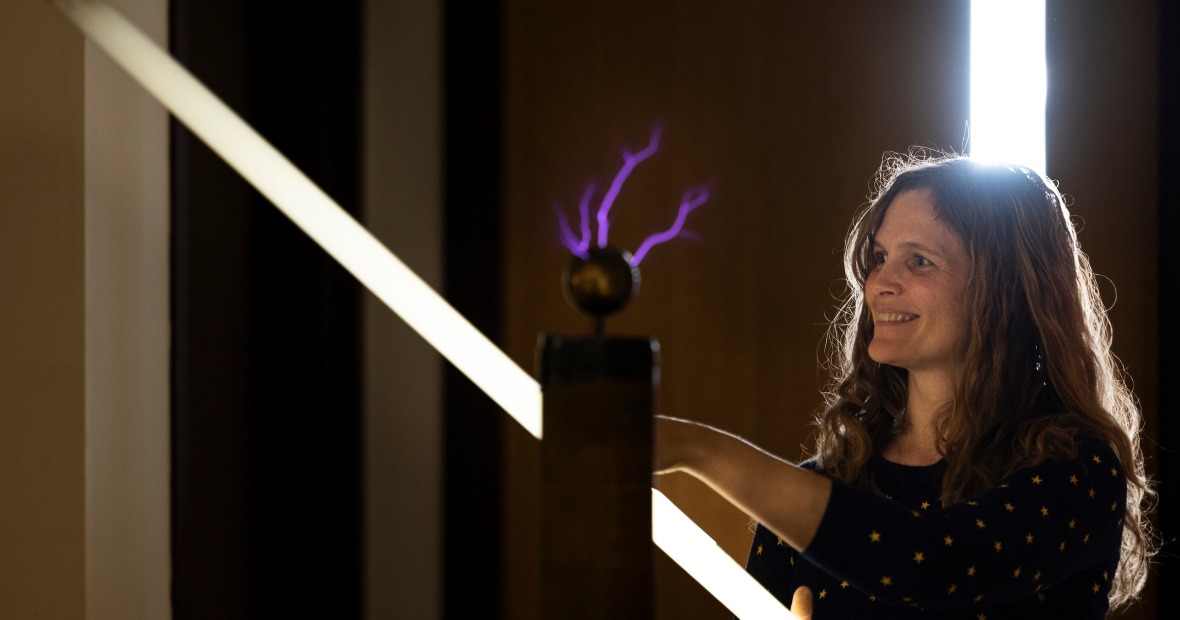Christensen named a Scialog® Fellow to study the Legacy Survey of Space and Time
Team to accelerate discovery from the largest, most complex astrophysics experiment to date
Charlotte Christensen, associate professor of physics at Grinnell College, has been named a Scialog® Fellow. This highly competitive program supports “research, intensive dialogue, and community-building to address scientific challenges of global significance”. It does so by bringing together early career faculty from multiple disciplines to work on high-complexity problems in the basic sciences that are significant to society.
Christensen, a physicist whose research focuses on using detailed computer simulations to understand the process of galaxy formation, will be part of an interdisciplinary team analyzing data from the Legacy Survey of Space and Time (LSST), expected to be carried out by the Vera C. Rubin Observatory in Chile, will take hundreds of astronomical observations of the southern hemisphere sky every night for a period of ten years to create an open dataset for scientific analysis. Funded in part by the U.S. National Science Foundation and the U.S. Department of Energy, this dataset will be larger and more complex than any previous astrophysics experiment.
As part of a team of approximately 50 scientists mentored by top experts in the field, Christensen will be one of the first scientists to work with the LSST dataset to make early discoveries and apply cross-disciplinary techniques to seek answers to fundamental questions about the Universe.
“The LSST dataset is astounding in its richness. Not only will it produce a detailed survey mapping the location of astronomical objects, it will also track how they change over time. The massive size of this dataset, though, presents a number of challenges along with opportunities. I'm excited to take on these challenges alongside this talented team of scientists,” she said.
Potential discoveries could include a better understanding of dark matter and dark energy, creating an inventory of our solar system and mapping the Milky Way galaxy, and studying objects that move or change in brightness. The Rubin Observatory telescope and cameras have unique design properties that enable the observatory to capture sharper images at a faster rate than has previously been possible and the long-term longitudinal nature of the observations will create an unprecedented data set.
Scialog® is a program of the Research Corporation for Science Advancement.

